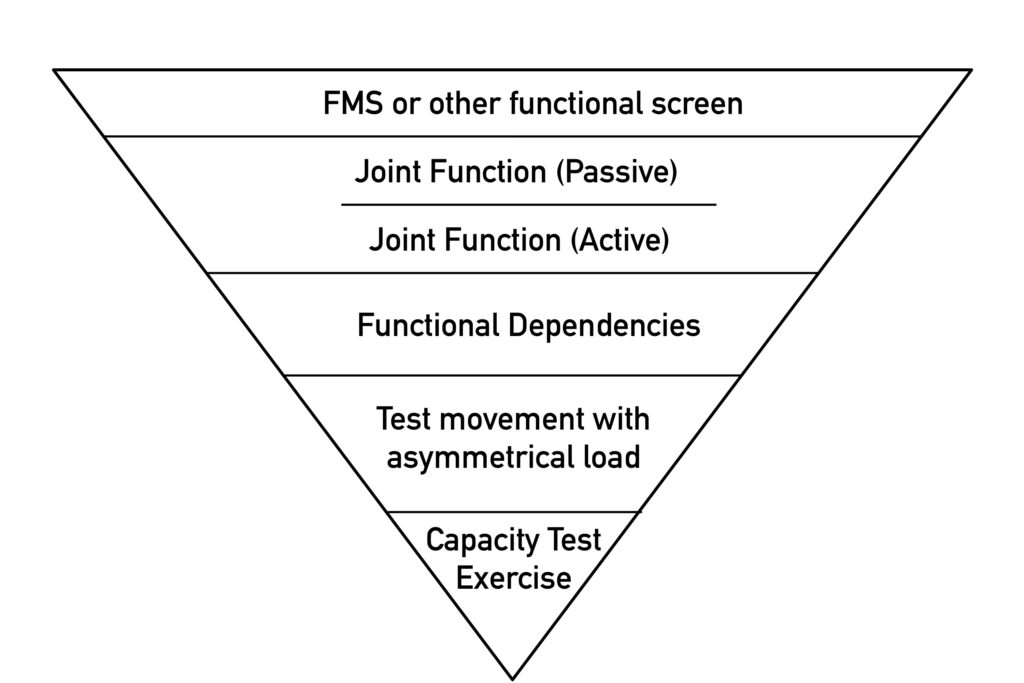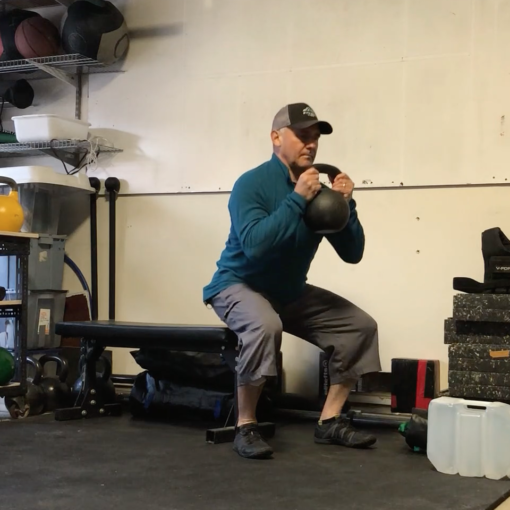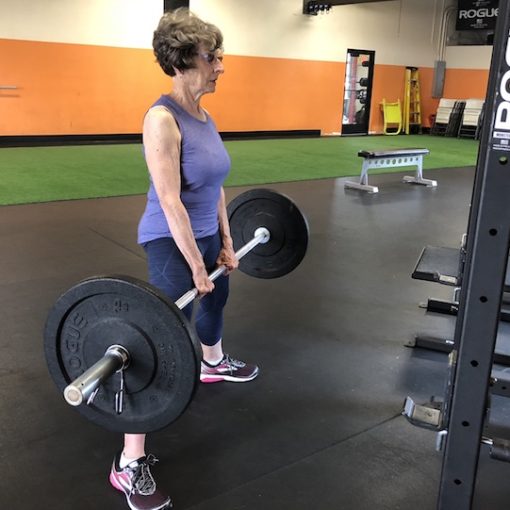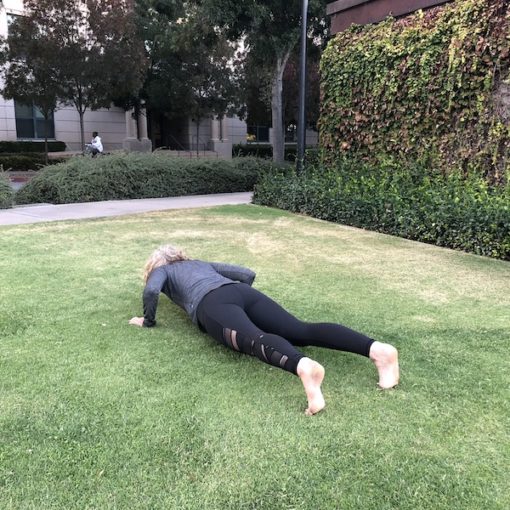The Current State of Exercise
If we want to get healthier, most of us know that we need to exercise; however, what kind of exercise should we do. “Should I start running, aren’t runners in good shape? “Should I get Pumped Up?” Often we are advised by sayings like “listen to your body” and “start slow and ramp up,” but when only 23% of us meet leisure-time physical activity (LTPA) guidelines according to research published in 2018, these adages should be carefully considered before taking action.
Guidelines are helpful but often don’t give you specific on how to get started and how to stay consistent. Confounding the issue is that many of us have some sort of musculoskeletal issue that includes pain and/or stiffness.
This series of posts describes my brand of Movement-Centered Strength and Conditioning that I call the Healthy Strong Fit Method.
The challenge the HSFM addresses is two-fold:
- How do we start athletes training, especially those who have limited athletic experience or who have some sort of pain or stiffness?
- How do we progress the athletes safely?
Hold up, Athletes, is this for me?
Yes, we are all athletes. Athletes train for a specific purpose. We think of athletes within the context of competitive sports, but athletes don’t show up on game day, play hard and hope for the best. Athletes prepare physically, practice their skill and technique and develop tactics and strategies for success.
The bar of athleticism is not “do you compete” but “do you bring rigor and consistency to achieving your goal.”
Here are some of the athletes I have trained:
D.C.: Two-Time cancer survivor, former basketball player and coach, training to stay healthy and active.
P. H.: Young entrepreneur, back tightness/stiffness due to back surgery as a teen. Wants to return to golf, tennis and not worry about back pain when he lifts something off the ground.
B. S.: Grandmother who wants to stay healthy to “see what kind of men her grandsons grow into.”
S. C.: Mom, wife, dancer who has hiked part of John Muir Trail, and has returned to longer hikes post hamstring injury.
J. S.: Financial Professional who wants to keep her shoulder healthy for climbing, biking and skiing.
* Note that all the athletes above with pain have seen one or more Licensed Health Care Practitioner(s) and are cleared for exercise. If you have pain, especially chronic pain, you need to see a LHCP, someone who diagnoses and treats people with pain on a regular basis.
If you are interested in more of my training philosophy, you can read my Movement Manifesto, but this series of posts are about “the what” and “the how” of Healthy Strong Fit Method so…
Let’s Get Started – Assessment and Movement Tests
Most of the athletes reading this have probably already gone, or will soon go, through a screening process that I use called the Functional Movement Screen (or the online version). It is a series of seven movements that help both the athlete and coach understand where the athlete is on the movement spectrum, i.e. which movements cause pain, (red lights), which movements need some practice (yellow lights), which movements are safe enough to load and/or train regularly (i.e. green lights).
We are building a list of red, yellow and green light exercises to help us develop a training program. In addition, we are building a list of movement tests, based on the red and yellow light exercises, that we’ll test periodically to measure movement quality progress in addition to the usual capacity tests.
Every journey needs a starting point and milestones, this is what we are creating with our movement assessment and movement tests.
How Do I Progress

With a capacity-centered training system, progressing is pretty straight-forward, you lift more weight, you complete your exercising in less time, you are progressing. You are just assuming you are ready for, say a deadlift of 200 lbs, because you did a deadlift with 190 lbs.
In movement-centered training, we definitely look at physical capacity periodically. More importantly, we look at the functional dependencies, that is, we take the test exercise/lift apart and test each of the positions and movements of the lift to confirm preparedness/readiness. Let’s go over an example using S.C and how she progressed in about eight months from working with a P.T. to going on a week long backpacking trip in the Sierra this fall to get more clarity on how to progress.

The very first step before a movement assessment is a verbal history, covering athletic/training experience, previous injuries and recovery, surgeries, childbirth(s), motor vehicle accidents, any other health issues.
In the case of S.C., she was a dancer for many years so is very flexible and very coordinated. I trained S.C. back in the Mad Dawg Fitness days. I helped her prepare for a 2 week backpacking trip on the John Muir Trail. When I reconnected with her this past spring, she was just finishing treatment with her P.T. and when she mentioned to her P.T. that she wanted to start hiking again, her P.T. said “Great, start out easy and slowly add weight and distance.” Given her previous experience training, and some recurring hamstring pain any time she tried increasing mileage, she knew there might be more to progressing than that.
Next, we did a modified FMS, which was as mostly yellow and green lights, i.e. most exercises are available for training. It is important to note here that she did fairly well on the single leg stance for of the FMS.
After that, we did some passive joint movement to double-check what hip functionality which showed asymmetry in right and left hip rotation.
The next assessments, active joint function, we used Side Lying Hip Circles and functional dependency exercise for walking, the Suitcase Carry, were the most helpful in determining the necessary exercises and creating framework for the programming. Almost every workout, we used the Side Lying Hip Circles as a test to make sure that S.C. wasn’t getting stronger at the expense of range of motion/functionality. Most workouts also had some sort of gait pattern exercise like a suitcase carry or a lunge, again to make sure that we weren’t sacrificing functionality for strength. We ended up not doing much work on the hands and knees, due to some wrist issues but we ended using a hands and knees plank that made a pretty big positive change in the Side Lying Hip Circles.
While S.C. was able to do her hike without pain, it was a little too much, too soon, so we had to take some active rest for a couple of weeks and revisit some of the exercises, in particular the Good Morning, to regain some hip and shoulder functionality.





